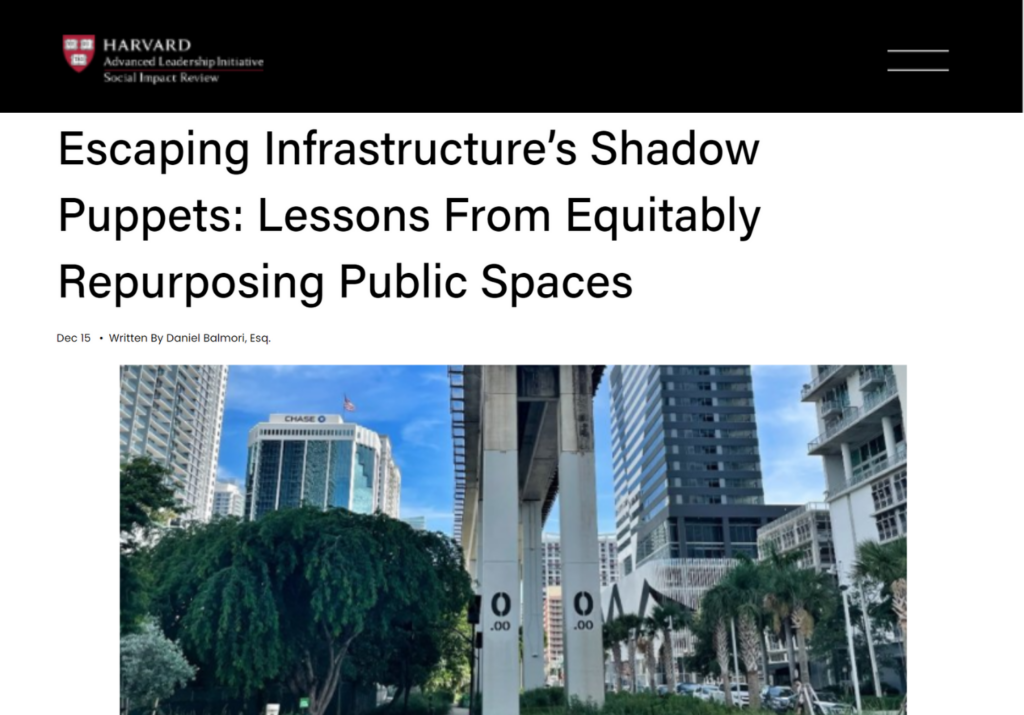Escaping Infrastructure’s Shadow Puppets: Lessons From Equitably Repurposing Public Spaces

Washington has a consensus: American infrastructure is overdue for capital improvements and maintenance. The most fervent debates on this topic have focused on how much funding should be allocated. But the most important discussion, even when it comes to hard infrastructure (e.g., rail, bridges, roads, and sidewalks), should be about how funding should be spent.
Traditionally, federal funds for infrastructure and transportation have been disproportionately allocated to benefit already-prosperous districts, instead of their adjacent, more marginalized neighbors. Failing to apply a rubric for social impact, government funding has appeared to blindly reward professionally-bound grant applications that are amply advocated by well-positioned political champions. By that stale criteria, there is no dispute that infrastructure bears culpability for legacies of segregating communities, spurring blight or displacement, and devastating natural environments. But, deployed thoughtfully, infrastructure improvements have the potential to positively transform the quality of life for entire communities, catalyzing economic opportunities, and making environments more resilient. Thinking critically about the way decision makers at all levels allocate these limited resources — including, specifically, employing innovative funding criteria to reach places of historic underinvestment — would help maximize the positive impact of such investments and avoid their historic blunders and devastating outcomes.
Read more here.